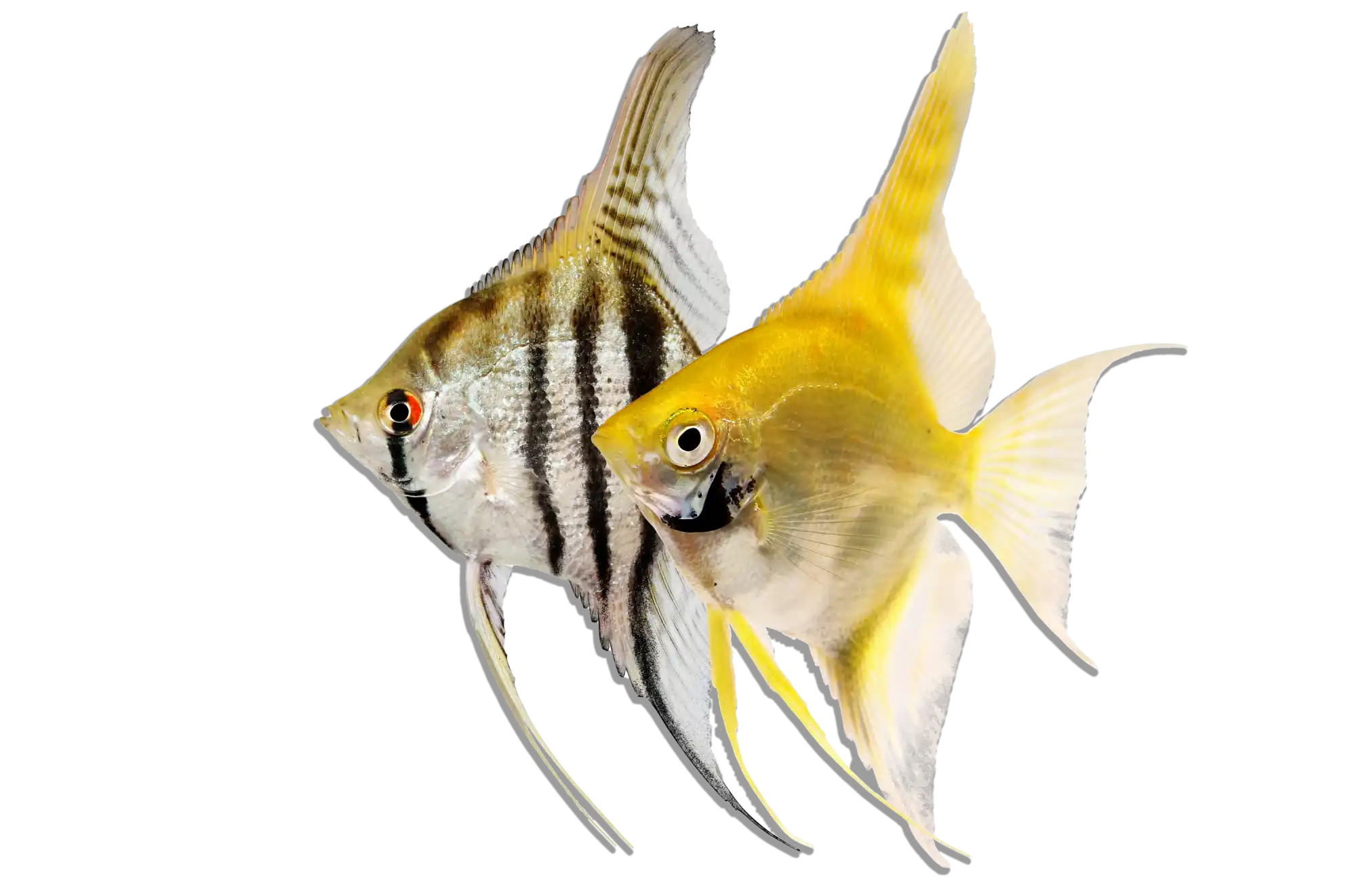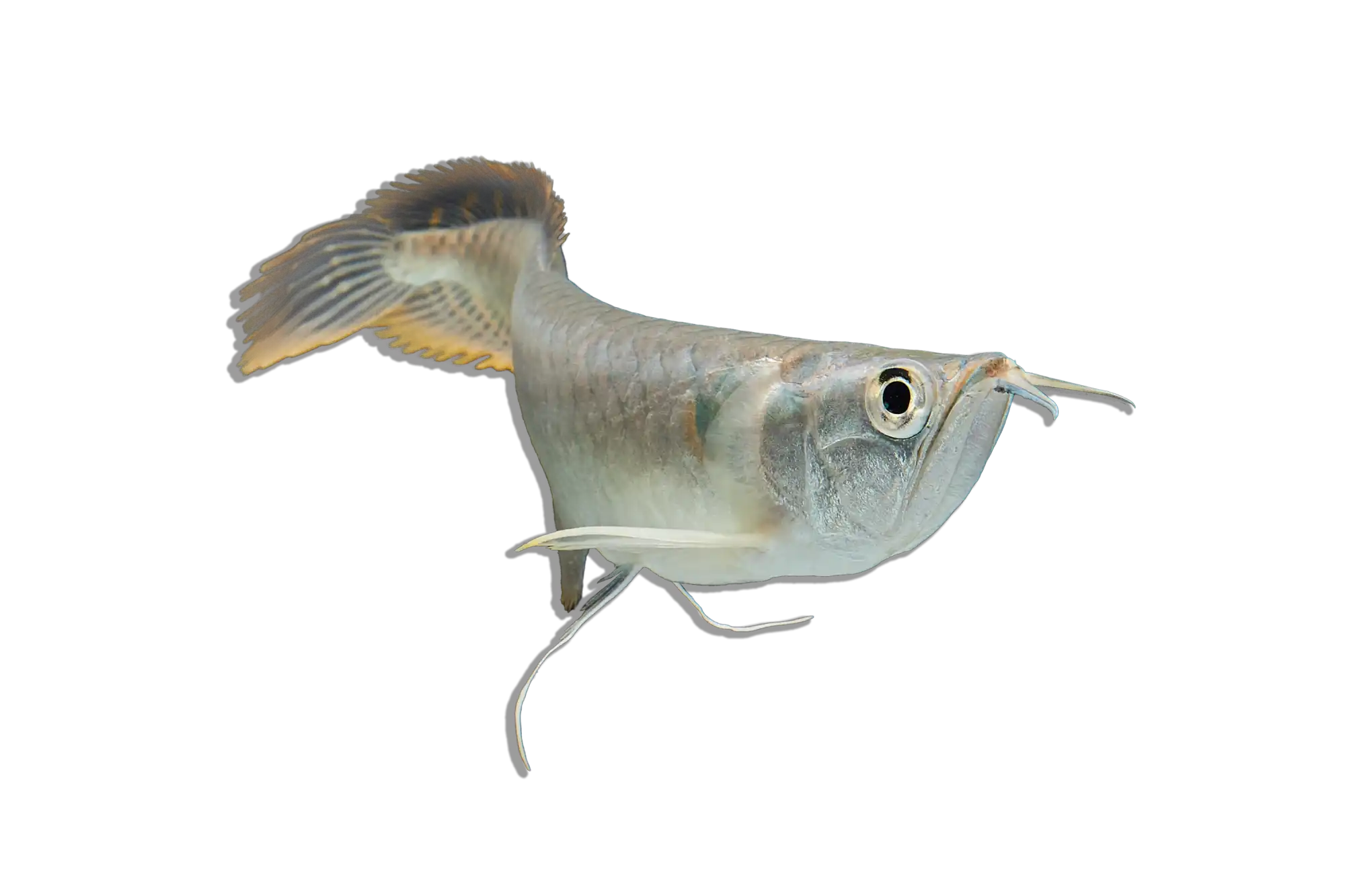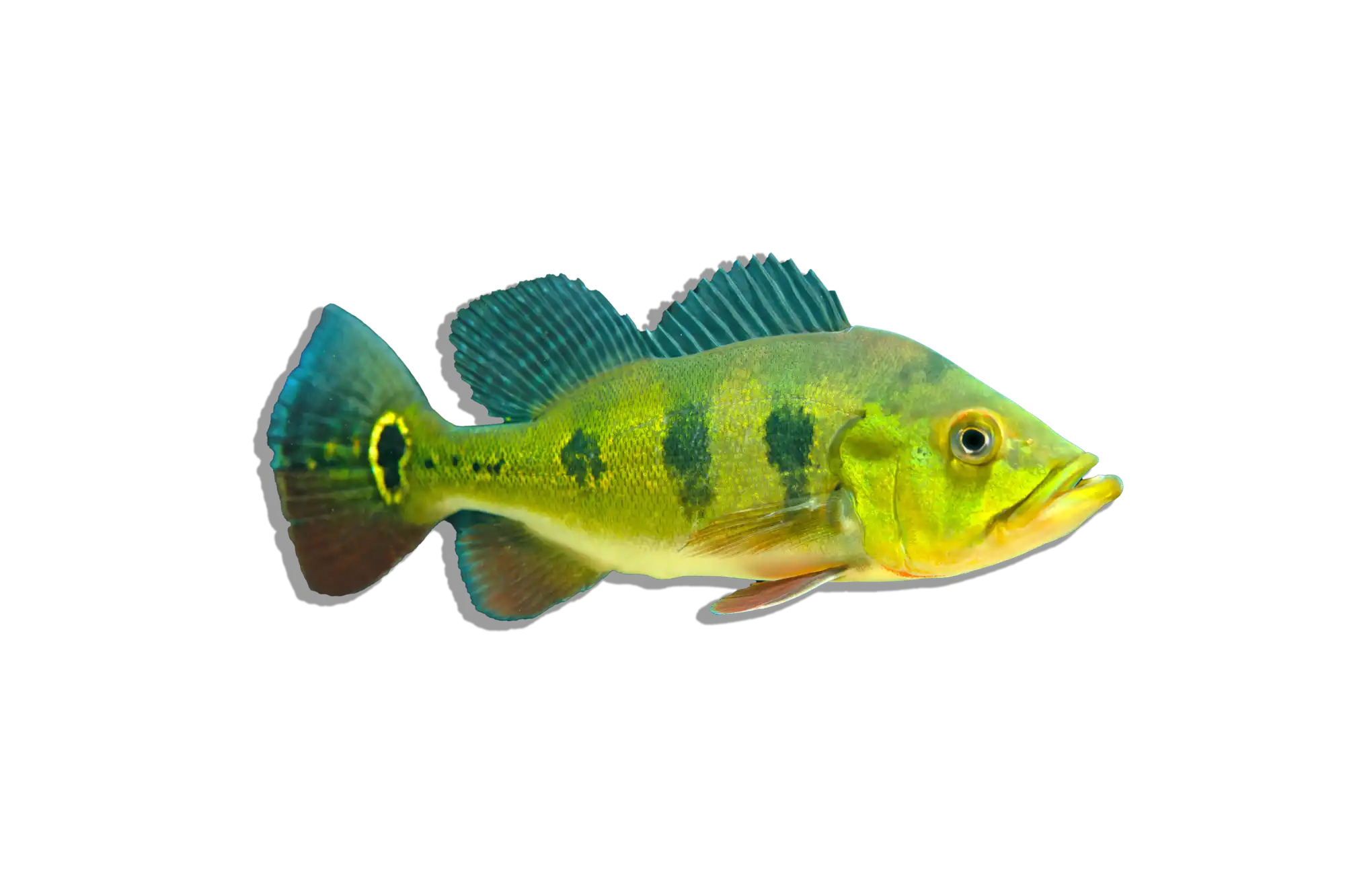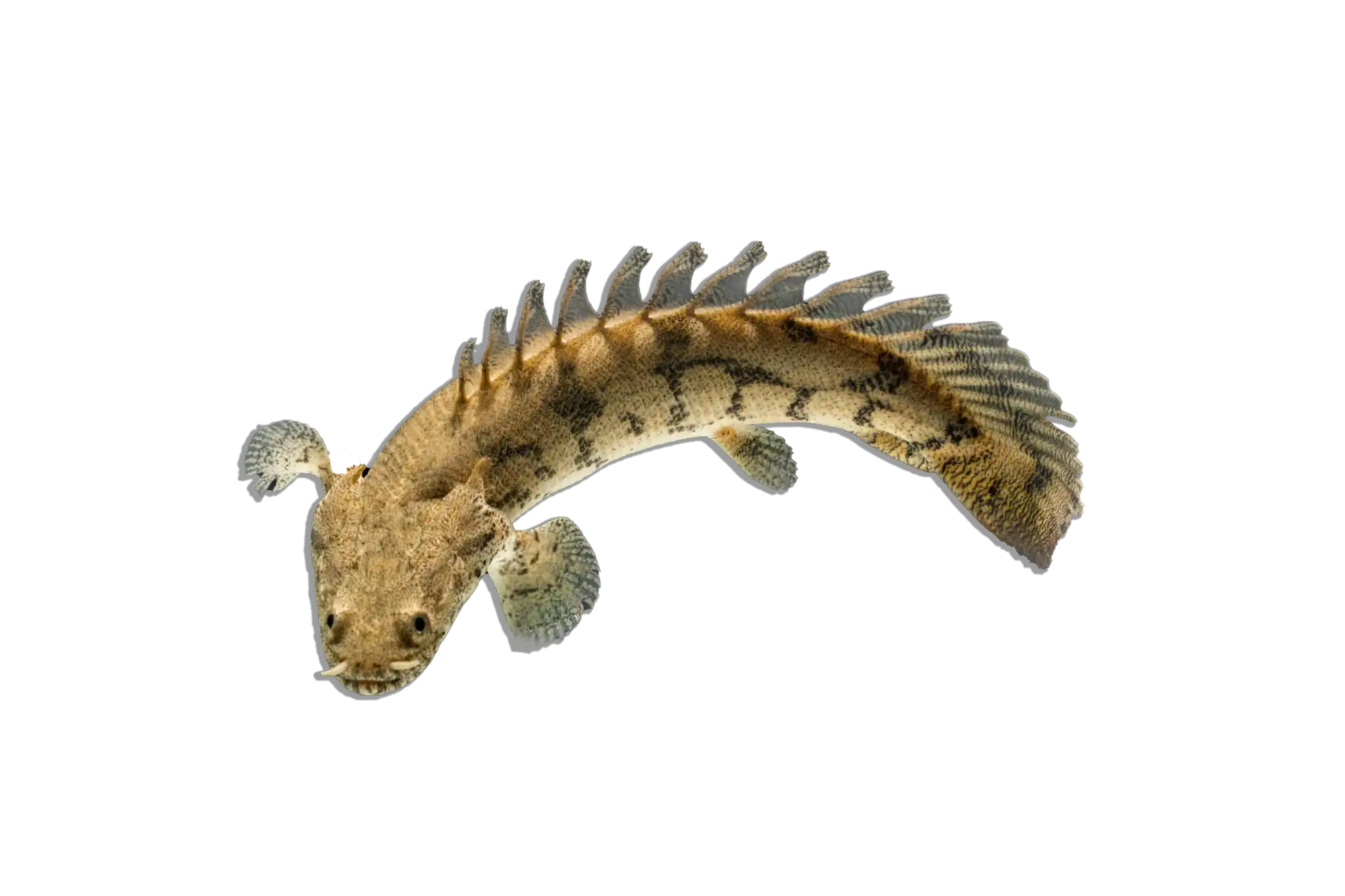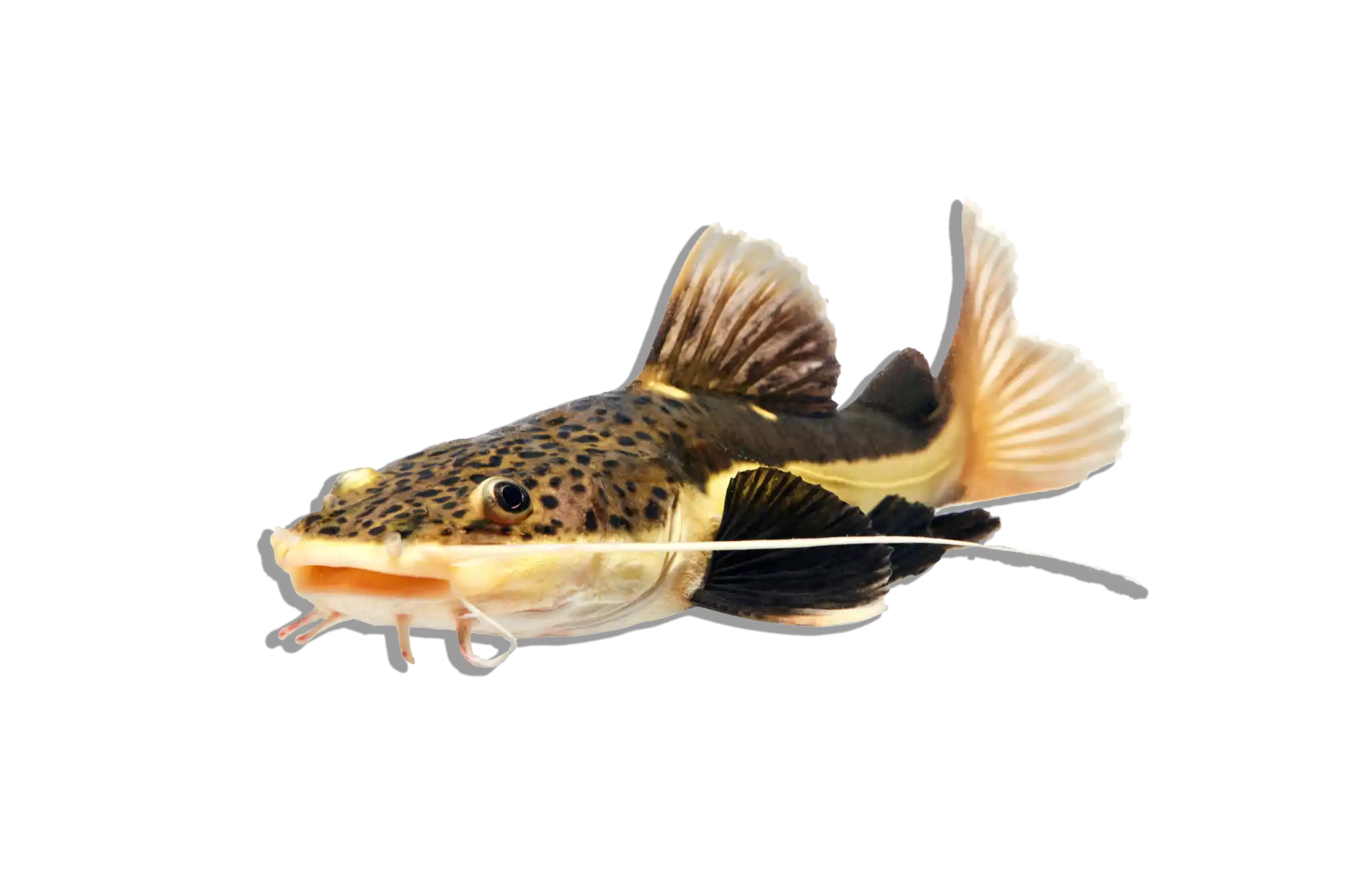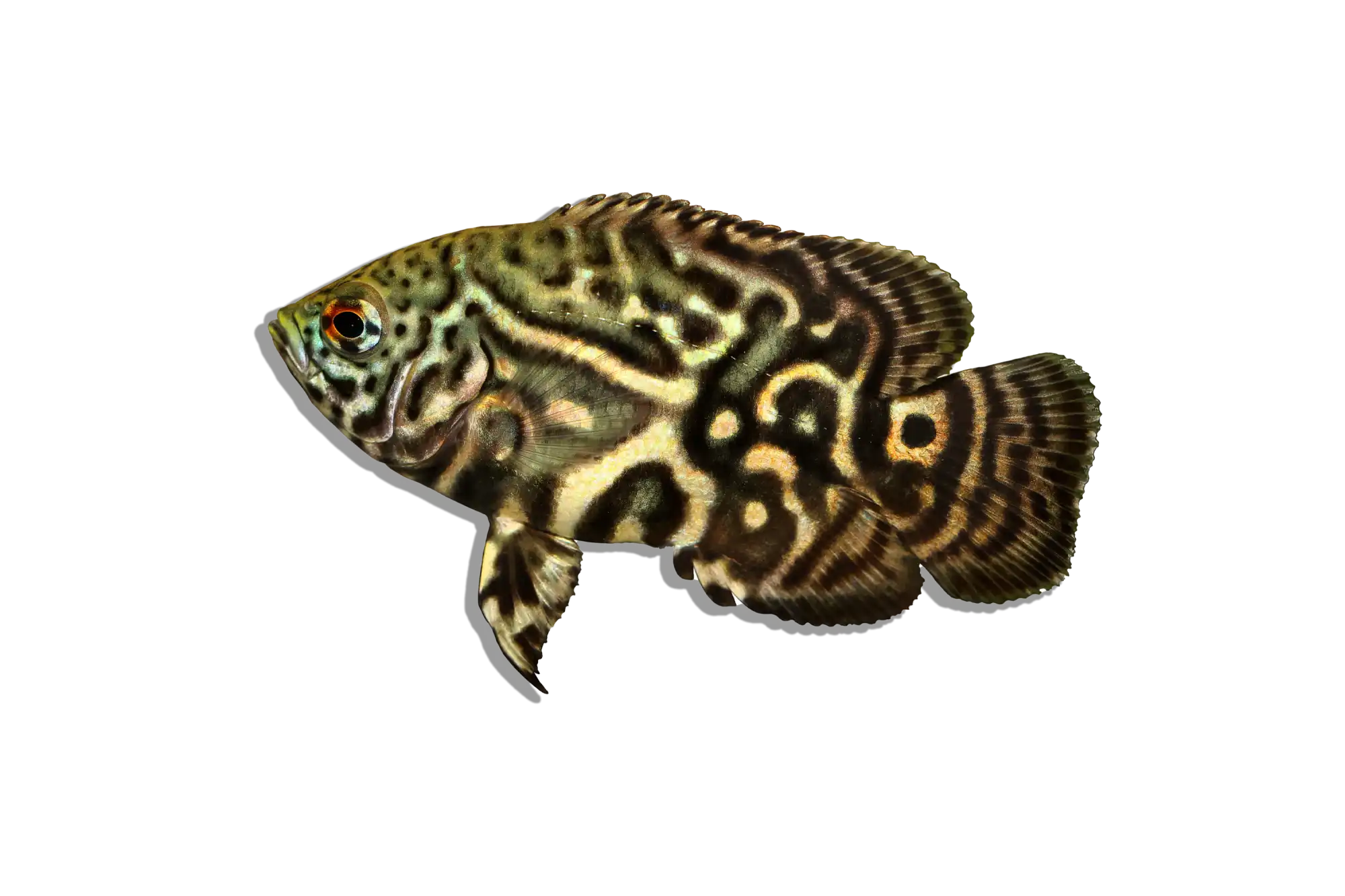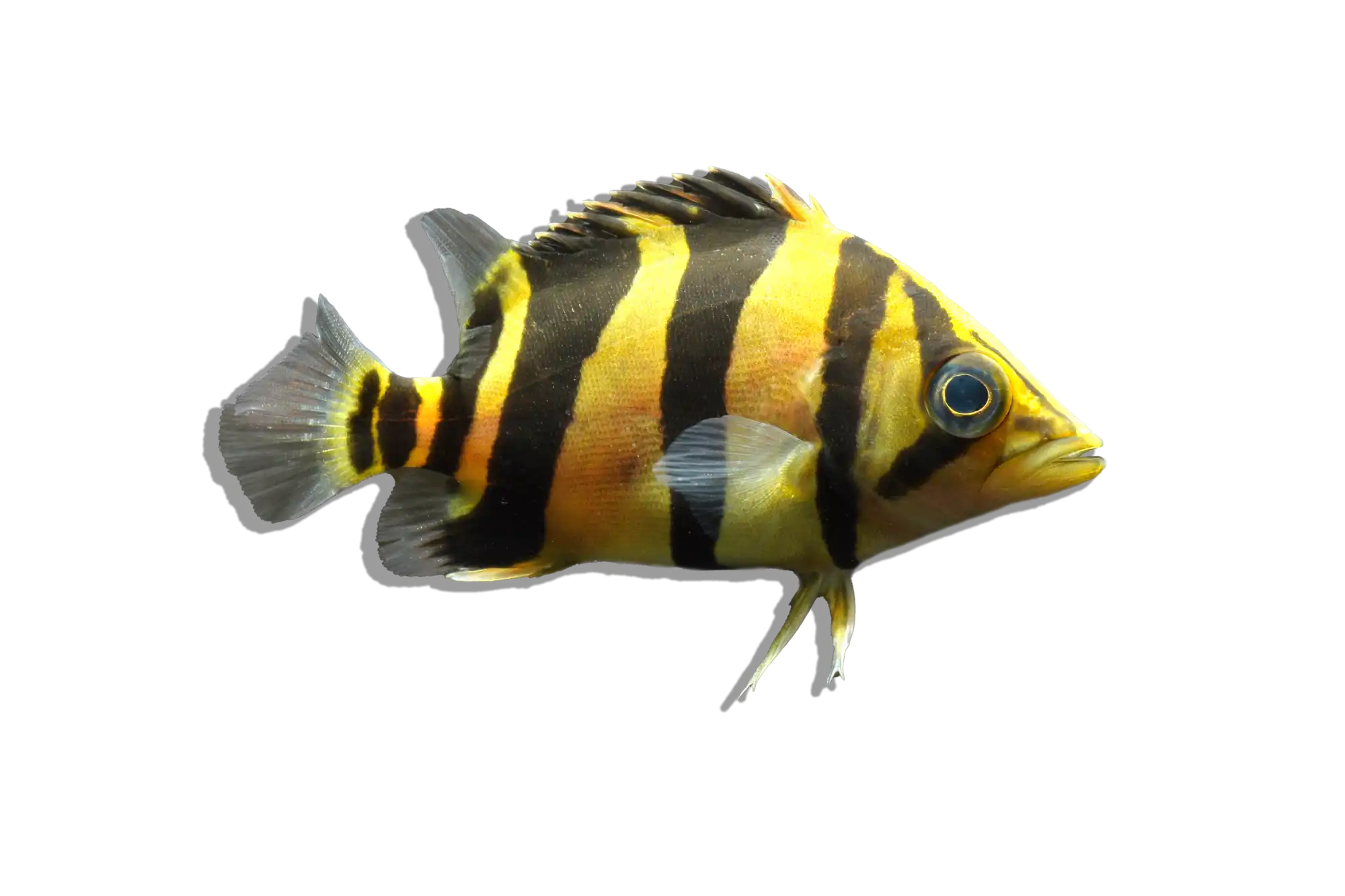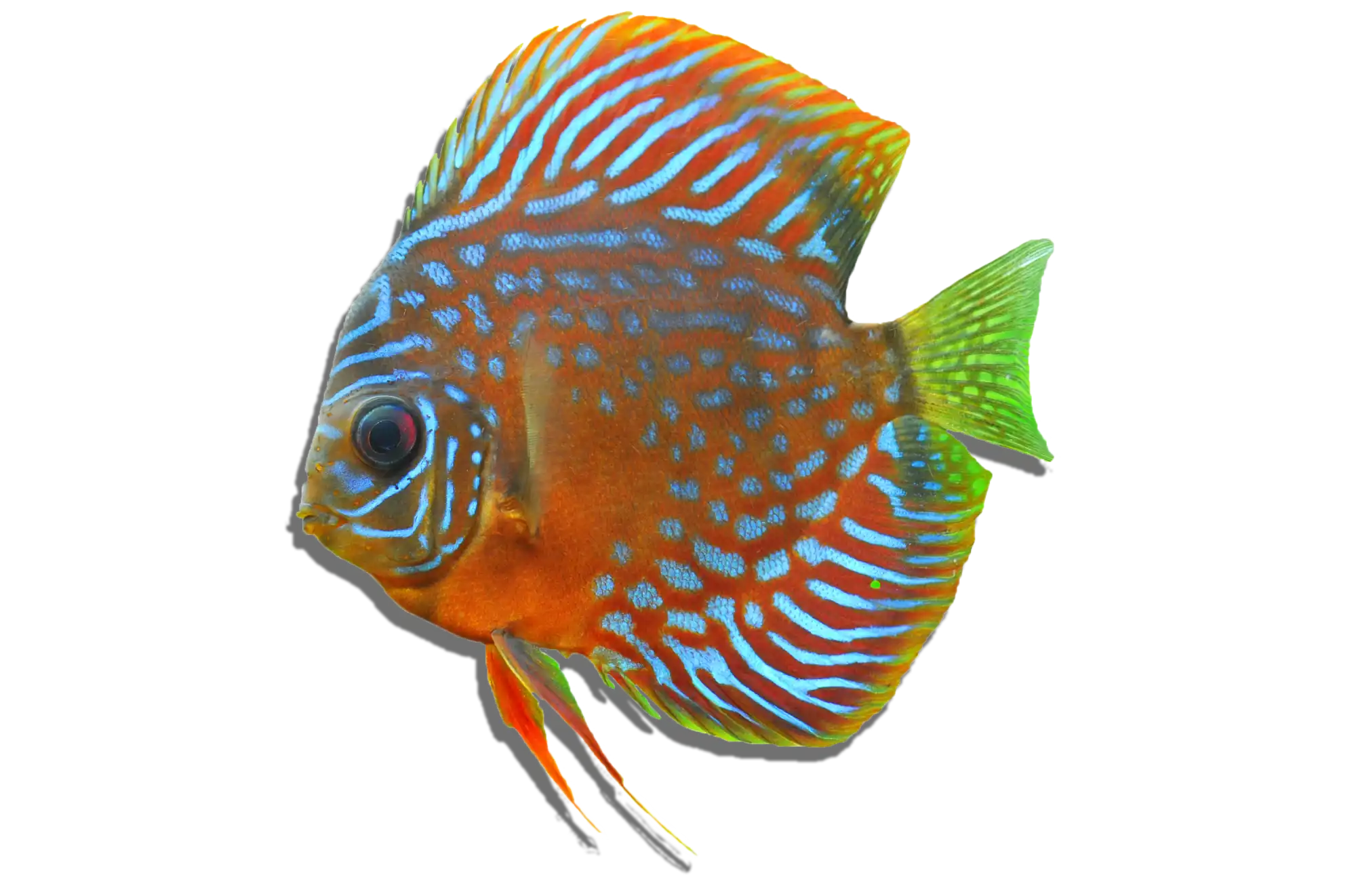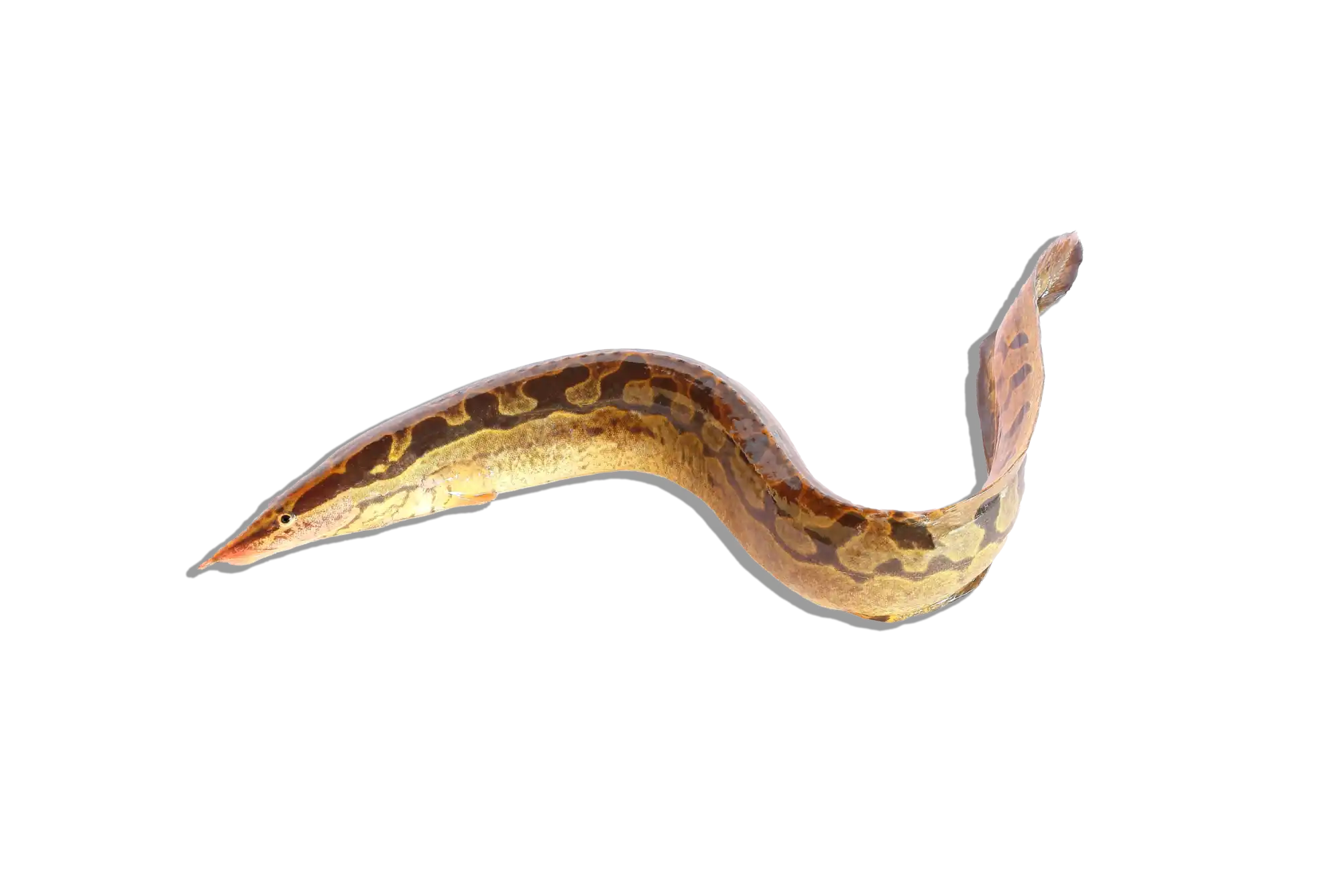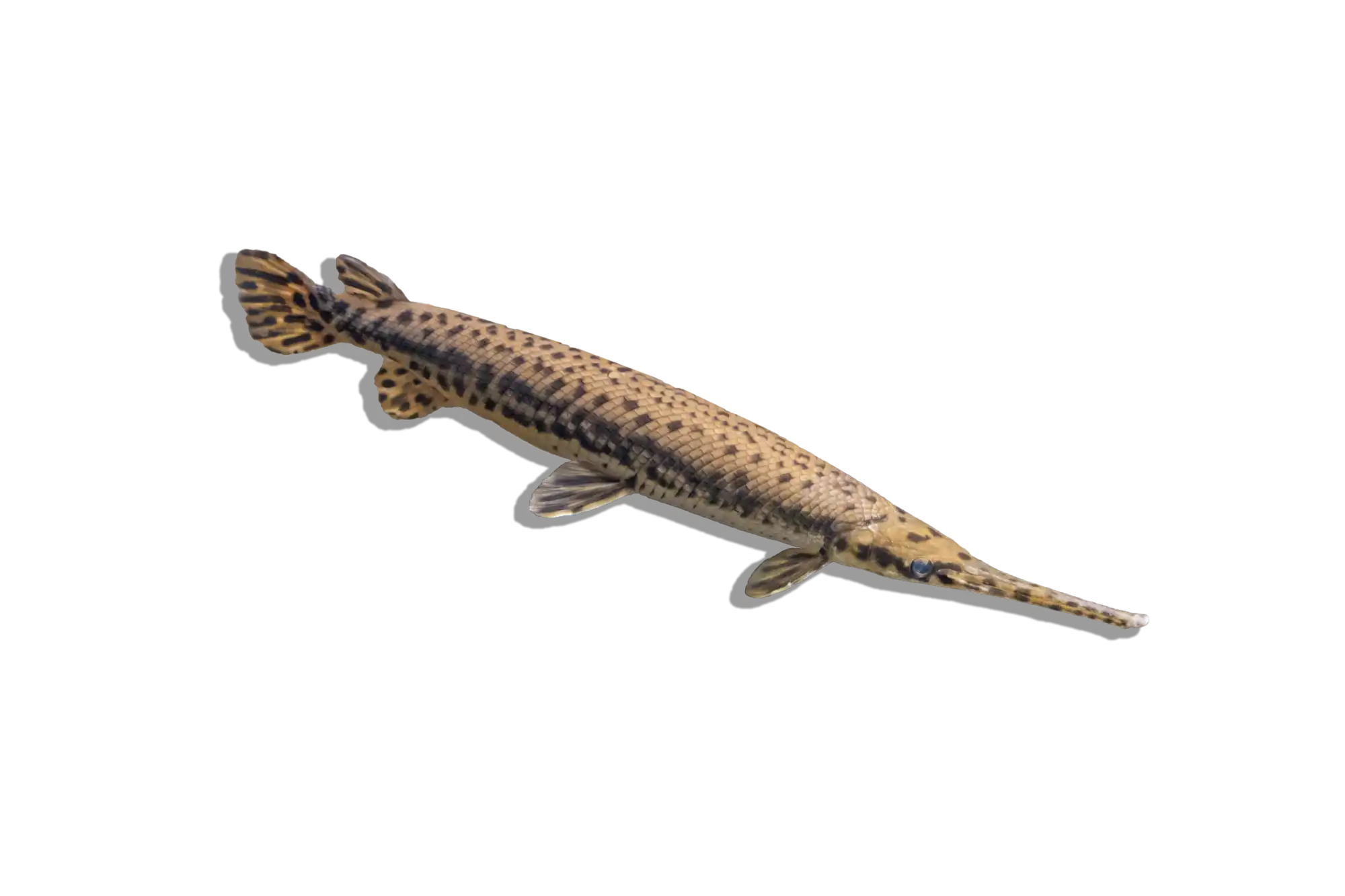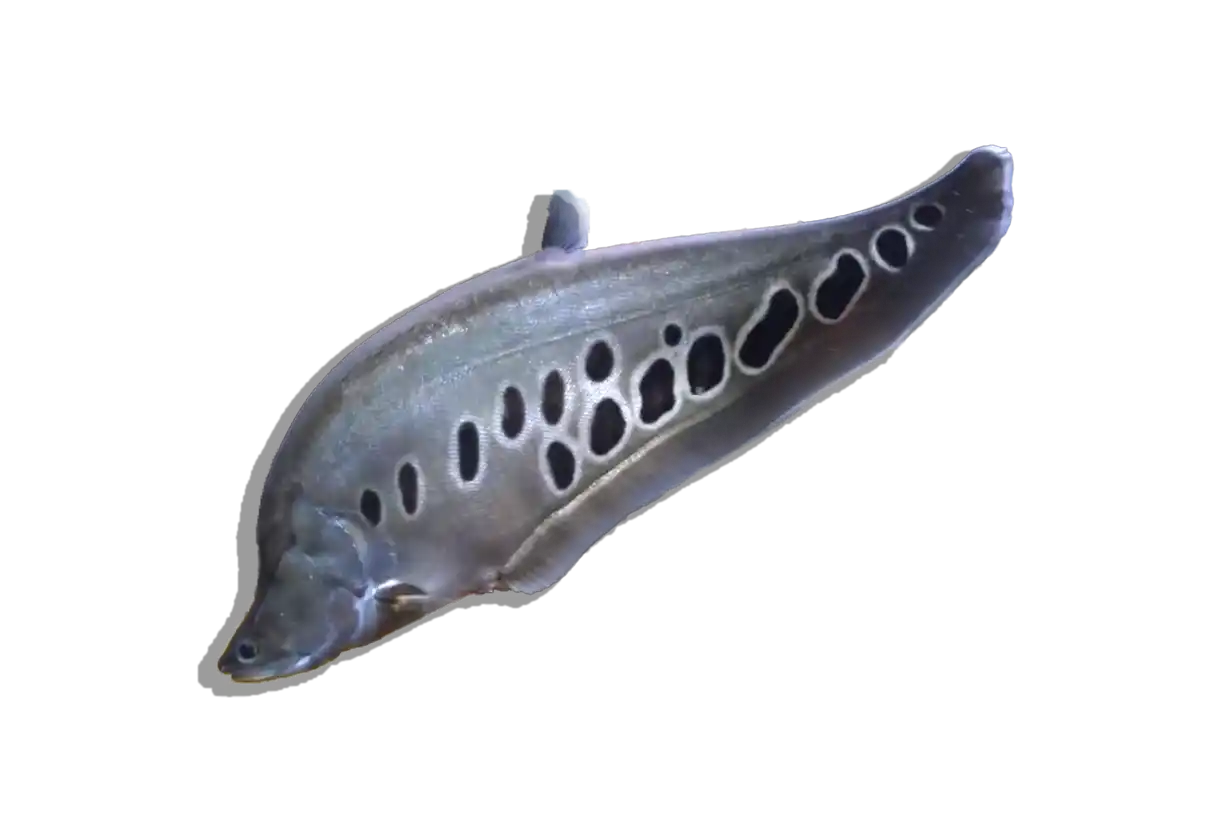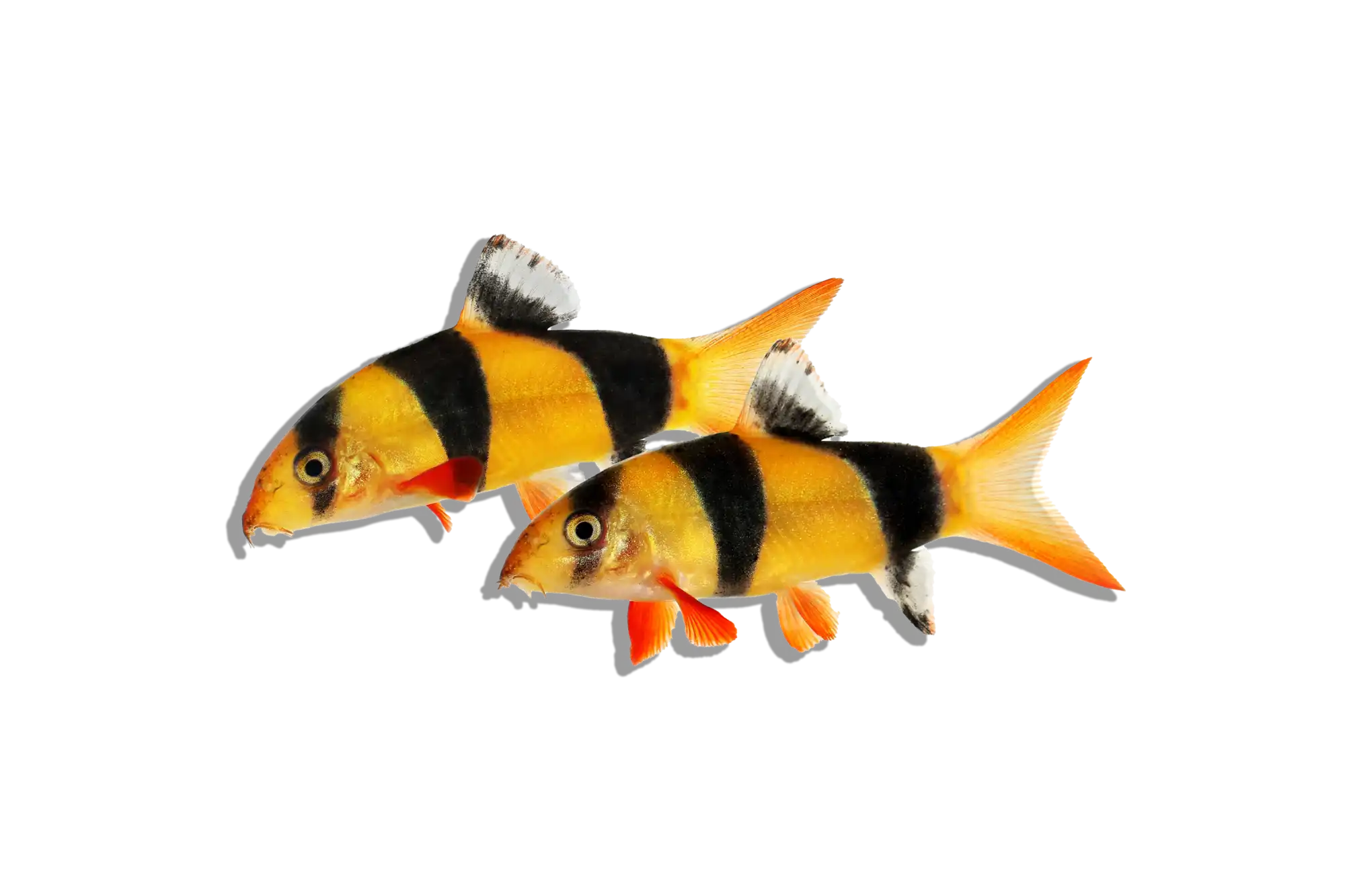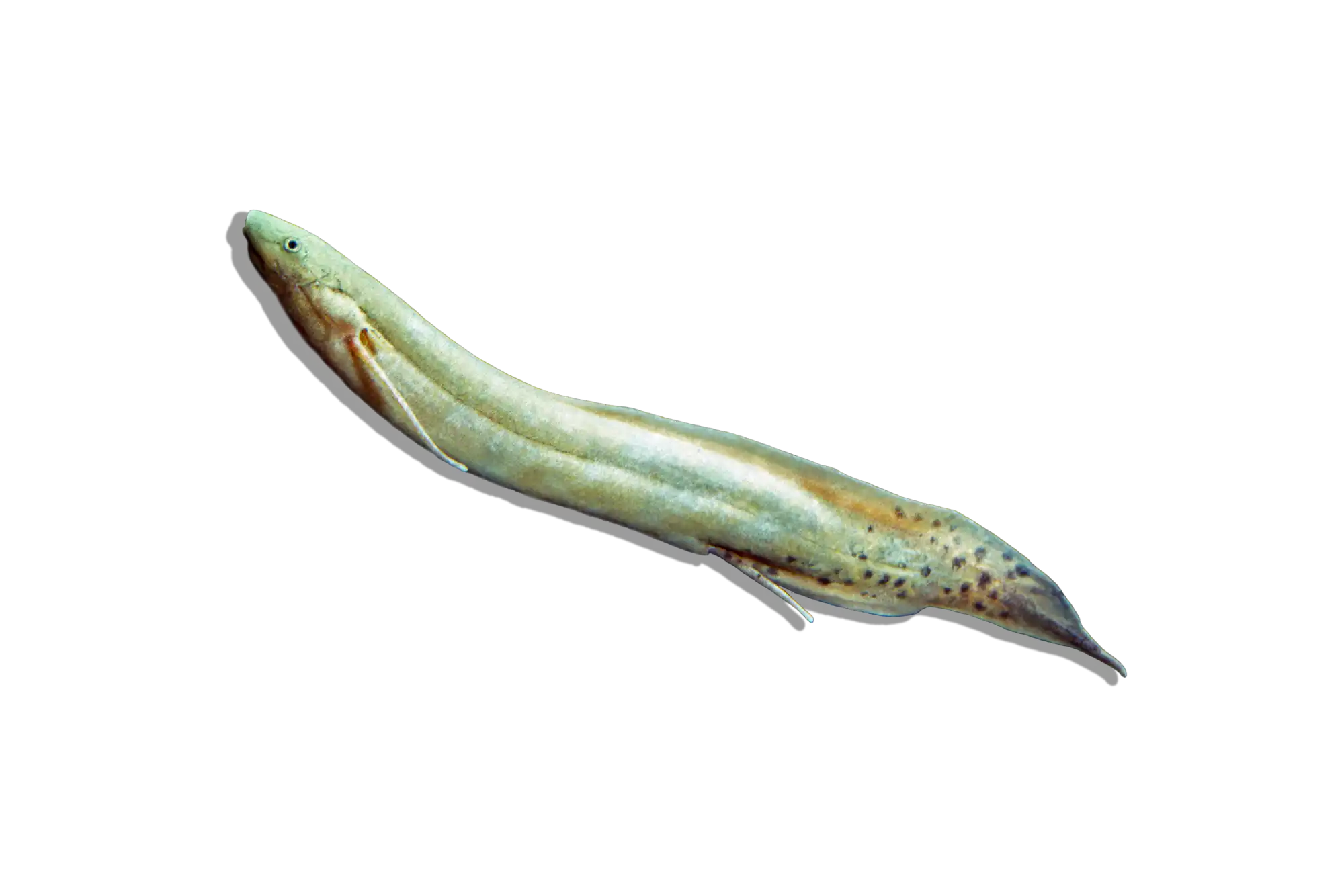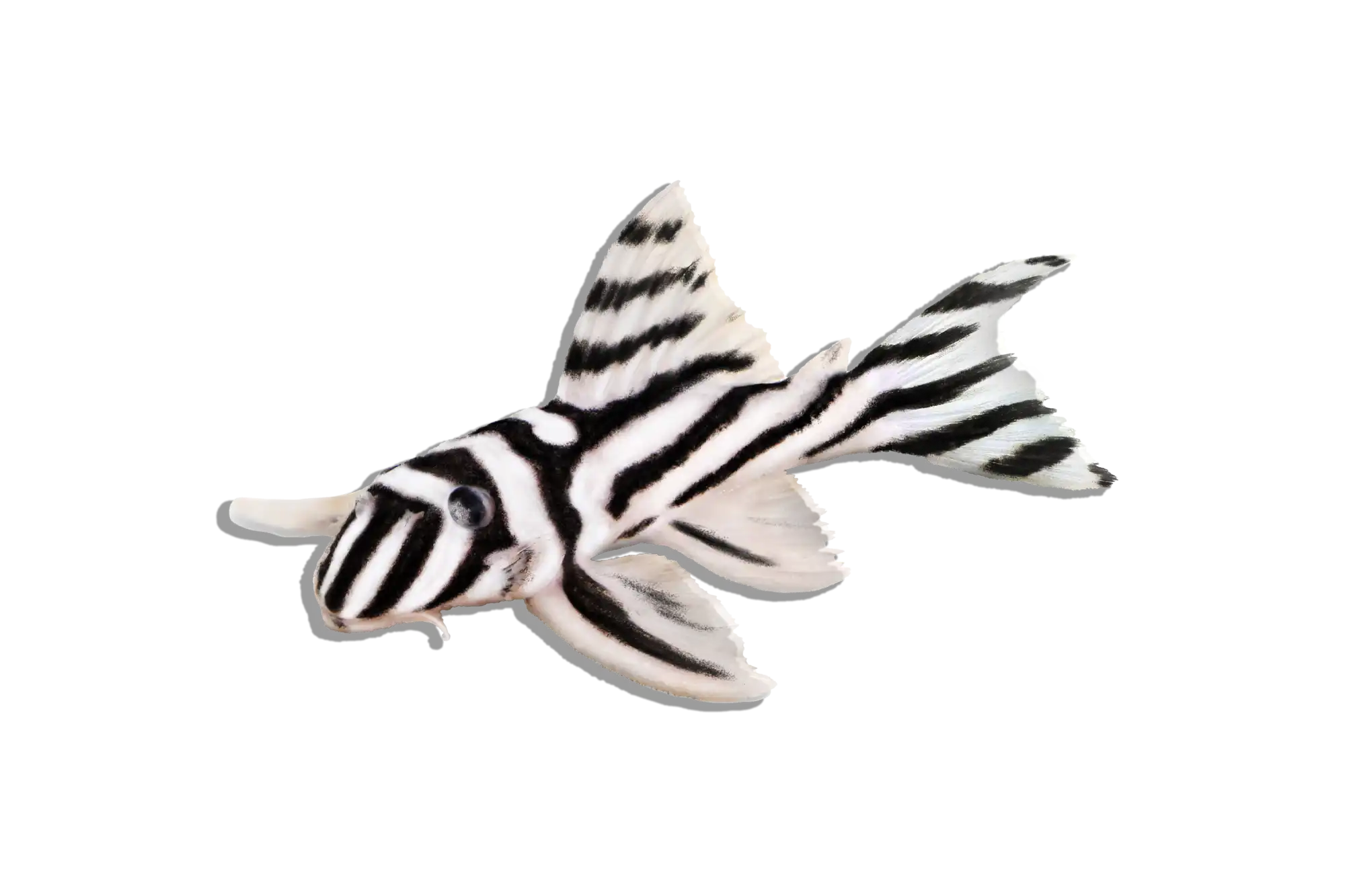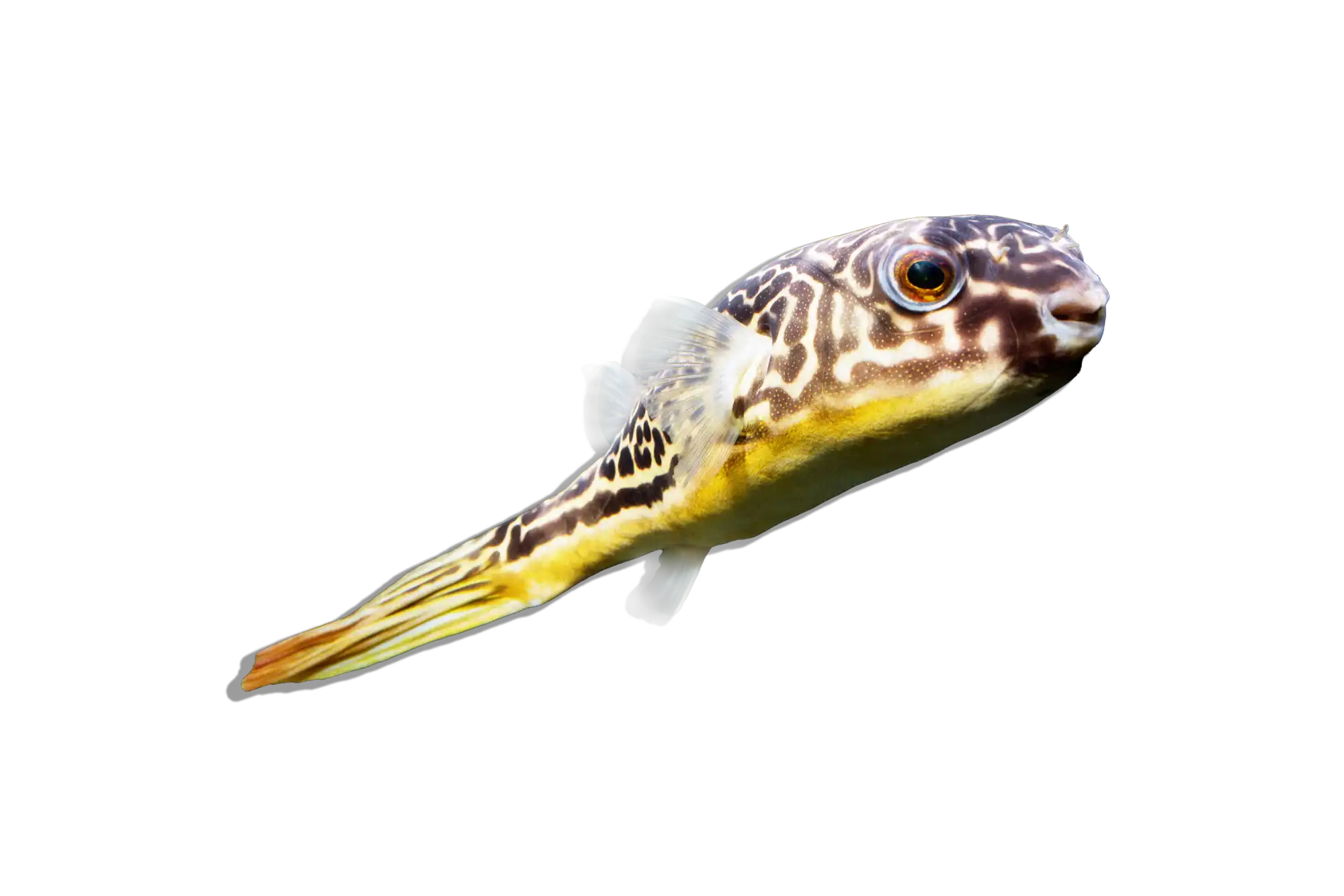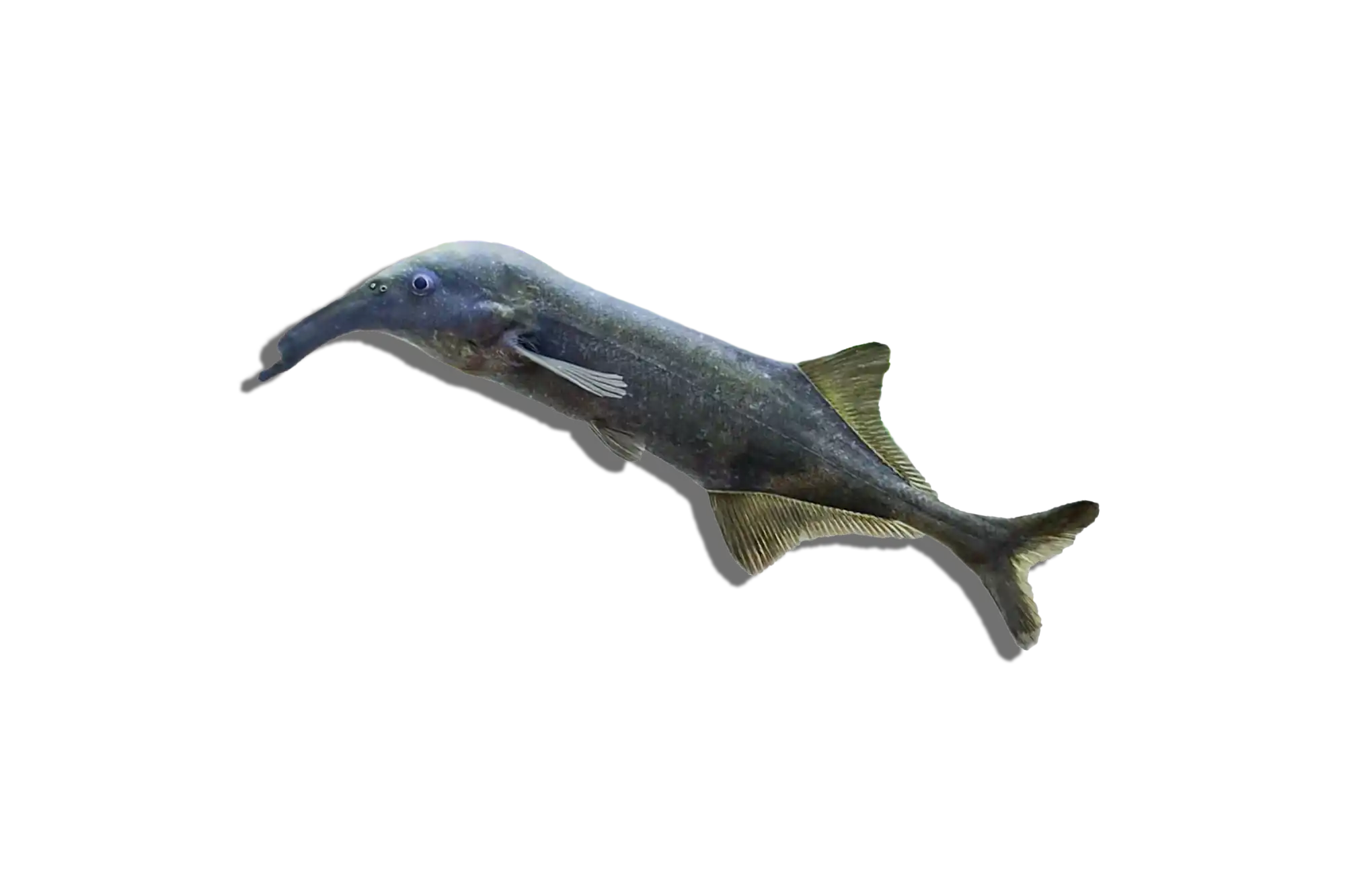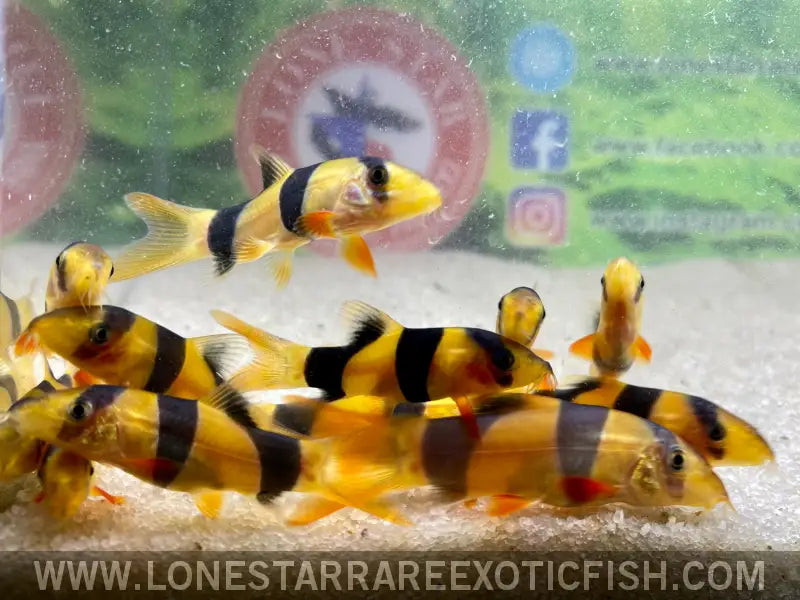Description
Common Name: Clown Loach
Scientific Name: Chromobotia macracanthus
Other Names: Tiger Botia, Clown Botia
The Clown Loach is a popular and visually striking freshwater fish known for its vibrant colors and lively personality. This species features a bright orange body with three prominent black bands and contrasting yellow and red highlights on its fins. Clown Loaches are social and active, making them a favorite among aquarists.
Habitat and Distribution: The Clown Loach is native to the rivers and floodplains of Southeast Asia, specifically in Indonesia on the islands of Borneo and Sumatra. These fish inhabit slow-moving rivers, streams, and flooded forests with sandy or muddy substrates and plenty of vegetation and submerged roots. The water in their natural habitat is typically warm, soft to moderately hard, and slightly acidic to neutral.
Size and Lifespan: In the wild, Clown Loaches can grow up to 12-16 inches (30-40 cm) in length. In captivity, they typically reach around 8-12 inches (20-30 cm). Their lifespan can range from 10 to 15 years, with some individuals living even longer under optimal conditions. Ensuring a proper diet, clean water, and adequate space are crucial for their longevity and well-being.
Diet and Behavior: Clown Loaches are omnivorous, feeding on a variety of foods in the wild, including insects, crustaceans, plant material, and detritus. In an aquarium, their diet should include high-quality sinking pellets, flakes, live or frozen foods such as bloodworms, brine shrimp, and daphnia, as well as vegetable matter like zucchini, cucumber, and spinach. Clown Loaches are known for their playful and social behavior, often seen swimming together in groups and interacting with each other. They are active during the day and prefer to be kept in schools of five or more to prevent stress and encourage natural behavior.
Breeding and Reproduction: Breeding Clown Loaches in captivity is rare and challenging due to their specific environmental needs and behaviors. Little is documented about their breeding habits in the wild, and successful reproduction typically involves creating conditions that closely mimic their natural habitat. They are egg scatterers, and successful breeding usually requires a large, well-planted tank with optimal water conditions and plenty of hiding spots. Hormonal treatments have been used in commercial breeding to induce spawning.
Aquarium Care and Tank Requirements: To keep Clown Loaches, a tank of at least 75 gallons is recommended for a small group, with larger tanks required for larger groups or when keeping them with other species. The tank should include plenty of hiding spots created with rocks, driftwood, and plants to mimic their natural habitat and reduce stress. A soft, sandy substrate is ideal to protect their delicate barbels. Efficient filtration and regular water changes are essential to maintain water quality. Providing moderate water flow will help replicate their natural riverine environment.
Ideal Tank Mates: Clown Loaches can be kept with other peaceful, similarly sized fish that share similar water parameter requirements. Suitable tank mates include other large tetras, peaceful cichlids, larger rasboras, and non-aggressive catfish. Avoid housing them with overly aggressive or significantly smaller fish that may cause stress or be seen as prey. They are social fish and do best in groups of their own kind.
Difficulty Level: Intermediate. While they are hardy and adaptable, their specific dietary needs, social structure, and requirement for clean, well-oxygenated water require attentive care and a well-maintained aquarium.
Water Parameters:
- Temperature: 75-86°F (24-30°C)
- pH: 6.0-7.5
- General Hardness (GH): 5-12 dGH
- Carbonate Hardness (KH): 3-10 dKH
- Ammonia: 0 ppm (ideal), up to 0.25 ppm (max)
- Nitrite: 0 ppm (ideal), up to 0.25 ppm (max)
- Nitrate: <20 ppm (ideal), up to 40 ppm (max)
Additional Information:
- The Clown Loach’s vibrant coloration and playful demeanor make it a favorite among aquarists, adding both beauty and activity to community aquariums.
- These fish are known for their ability to produce clicking sounds, which they use during social interactions and feeding.
- In their natural habitats, Clown Loaches play a role in controlling populations of small invertebrates and contributing to the overall health of the aquatic ecosystem.
- Fun fact: Clown Loaches can be observed resting on their sides or in unusual positions, which is normal behavior and should not be mistaken for illness. This unique resting habit adds to their charm and appeal.

